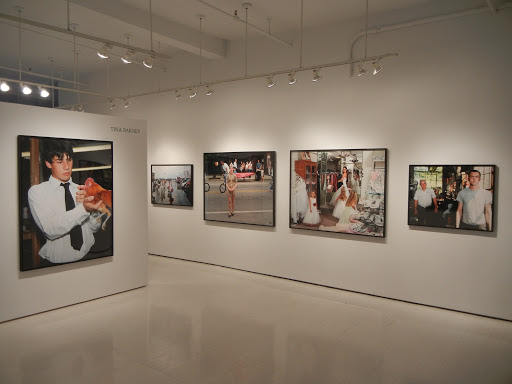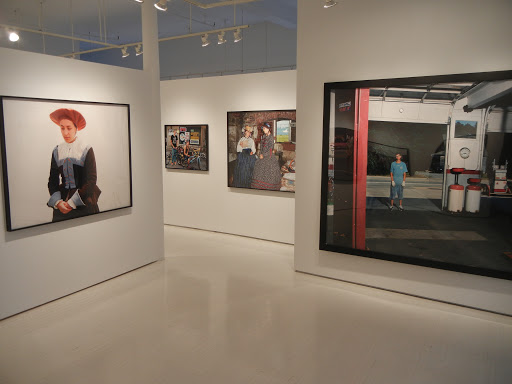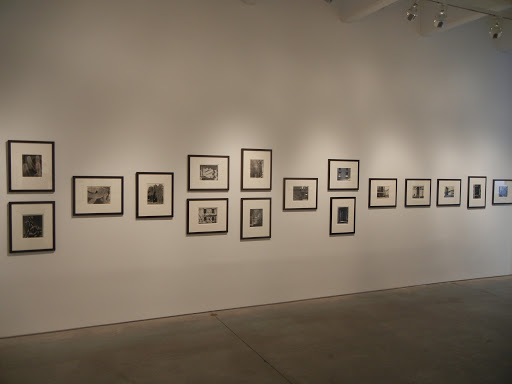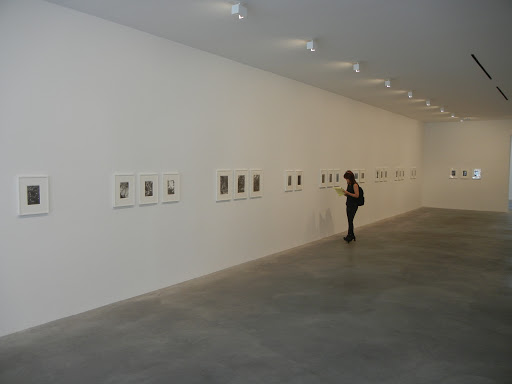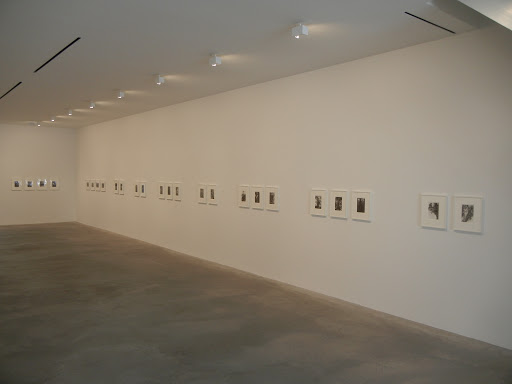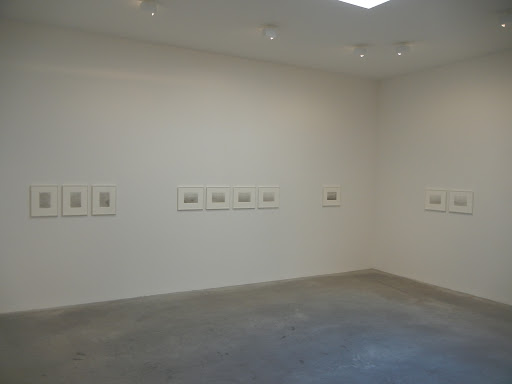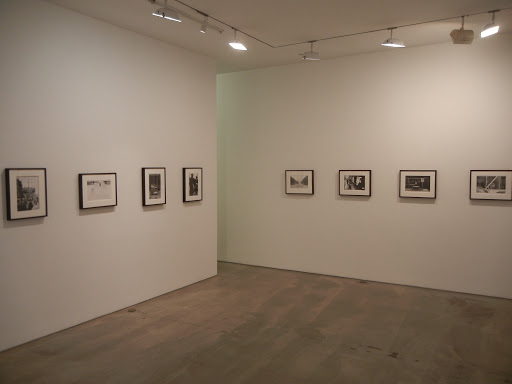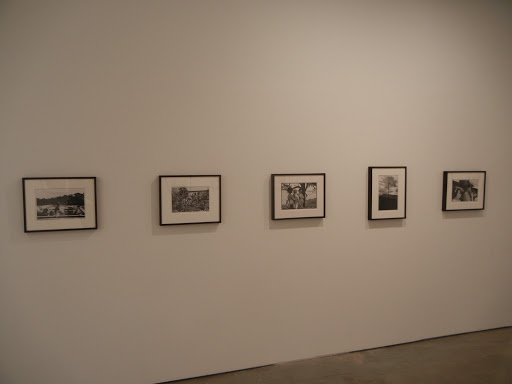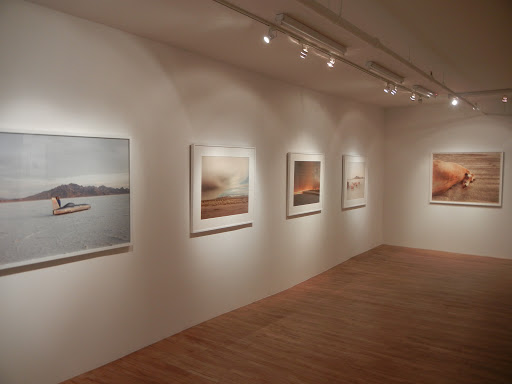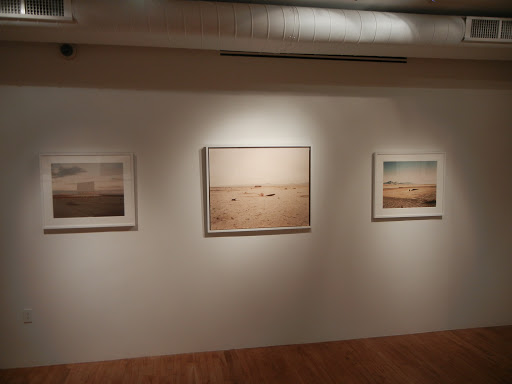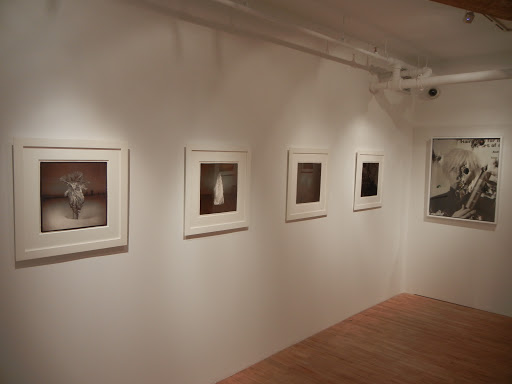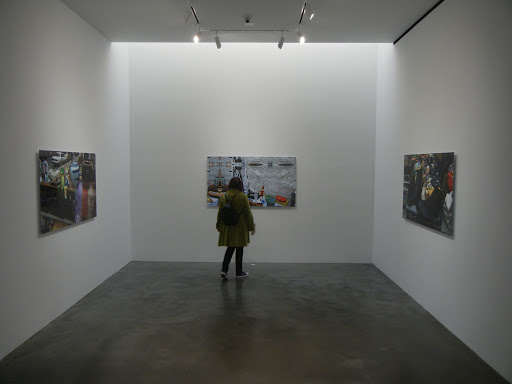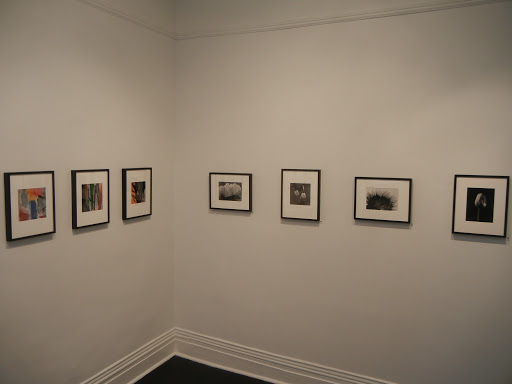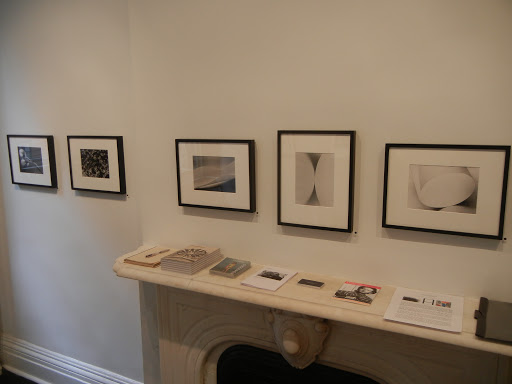JTF (just the facts): A two artist show containing a total of 40 black and white photographs by the husband and wife pairing of Ray K. Metzker and Ruth Thorne-Thomsen. The works are framed in white or blond wood and matted, and hung against white walls in the entry space and main gallery area. All of the photographs by Metzker (there are 23) are from the series Pictus Interruptus and are displayed in the main gallery space. They are vintage gelatin silver prints made between 1976 and 1981, sized either 11×14 or 16×20, and available in editions of 5, 15, 20, 25, or 30. The works by Thorne-Thomsen (there are 17) are from four different series: Expeditions, Door, Prima Materia, and Songs of the Sea and are on view in the entry area. They are toned vintage gelatin silver prints, sized 4×5, and available in editions of 25. (Installation shots at right.)
Comments/Context: While the premise of this show is that there are connections and relationships between the photographs of Ray K. Metzker and Ruth Thorne-Thomsen, the reality is that these are two very different bodies of work and aesthetic sensibilities. Yes, the two artists are married to each other, and yes, both have placed objects in front of the camera in these particular images, but that’s where the superficial similarities end I think.
Metzker’s Pictus Interruptus series is a masterful study of flat, two dimensional abstraction. Starting with something vaguely identifiable (a street sign, a gutter, a parking lot, a city view, a set of stairs, a marble faced wall), he has then quickly waved a piece of paper, a face in a magazine ad, a folded edge, or some other perforated object through the image area, creating blurred frenetic forms that interrupt the compositions. When juxtaposed with the original views, lines and angles slash through the frame, bright white trapezoids and dark fields of dots cutting in front of the found shapes. The result is images that mix crispness and softness, hard edged geometry with the passing glance of a model’s eyes. They’re restlessly inventive, unexpected, and routinely engrossing.
Thorne-Thomsen’s intimate pinhole photographs are dark and dreamlike, full of oversized surreal heads, floating airships, silhouetted figures, and broad sweeps of land. Female statues perch on columns engulfed in fog, a man made of dots stands on a rocky seashore, and a hot-air balloon hovers near the Leaning Tower of Pisa. While these fabrications are indeed fanciful and unreal, their mystery seems a little too obvious and self-conscious to me. They successfully conjure up a mythical world, but from my perspective, it was almost like the artist was trying a little too hard to be magical.
Overall, this show is a quirky pairing, held together by a simple bonds but largely non-competitive. I think the Metzker abstractions continue to be visually challenging and exciting (even three decades later), largely due to their smart understanding and manipulation of the way a camera sees.
Collector’s POV: The works in this show are priced as follows. The Metzker prints range in price from $7500 to $25000, based on the place in the edition. The Thorne-Thomsen prints are $4000 each. Metzker’s work has only been intermittently available in the secondary markets over the years; recent prices have ranged between $1000 and $23000. Thorne-Thomsen’s prints have not yet reached the second markets, so gallery retail is likely the best option for those collectors interested in following up on her work.
Rating: * (one star) GOOD (rating system described here)
Transit Hub:
- Review: New Yorker (here)
Ray K. Metzker and Ruth Thorne-Thomsen, Two of a Mind
Through November 17th
Laurence Miller Gallery
20 West 57th Street
New York, NY 10019
